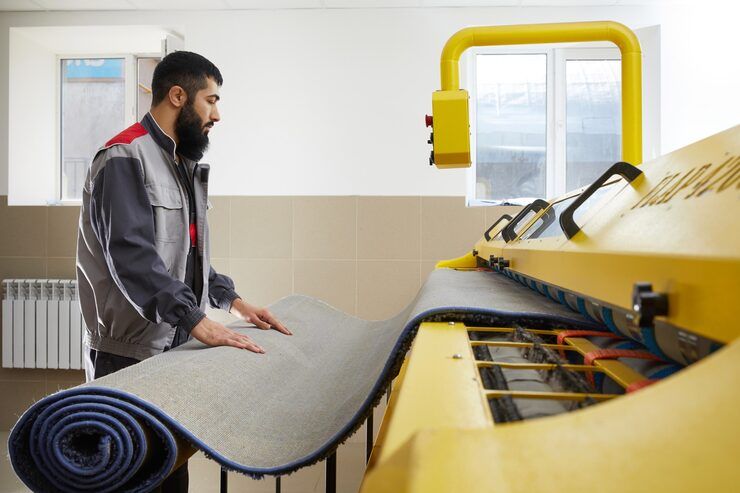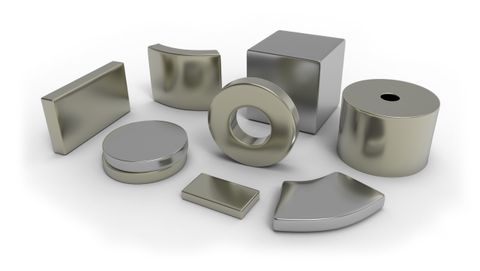Carpet Weaving Machines Explained: Types, Functions, and Benefits
Carpet weaving machines play a central role in the textile and flooring industries, transforming yarns into decorative and functional carpets used in homes, offices, and public spaces. Historically, carpets were woven by hand, often requiring months to complete a single piece. However, with the advancement of industrial machinery, modern carpet weaving has become faster, more consistent, and more efficient.
These machines are designed to automate complex weaving processes, combining technology and craftsmanship. They produce carpets of varying textures, colors, and patterns — from traditional Persian designs to contemporary commercial flooring. Understanding how these machines work and their different types provides insight into how the textile sector continues to evolve to meet both aesthetic and practical demands.

Importance
Carpet weaving machines are crucial to today’s manufacturing economy. They support industries ranging from home décor to large-scale commercial flooring. The integration of automated systems and digital controls has allowed manufacturers to improve efficiency while maintaining quality and creativity.
Why Carpet Weaving Machines Matter:
-
Efficiency: Machines can produce large volumes of carpets in a fraction of the time compared to manual weaving.
-
Precision: Advanced machines ensure accurate pattern replication, reducing defects.
-
Cost-Effectiveness: Automation reduces labor costs and material waste.
-
Customization: Digital patterning allows designers to create unique, complex designs quickly.
-
Sustainability: Modern machines use eco-friendly fibers and energy-efficient operations to minimize environmental impact.
The use of carpet weaving machines not only benefits large-scale manufacturers but also supports small textile workshops aiming to scale their production without sacrificing craftsmanship.
Recent Updates
In the past year (2024–2025), several innovations have reshaped the carpet weaving industry. The focus has shifted towards automation, energy efficiency, and digital design integration. Manufacturers are adopting smart systems that monitor performance, optimize yarn usage, and detect weaving errors in real time.
Key Trends in 2024–2025:
| Trend | Description |
|---|---|
| AI-Assisted Weaving | Machines use artificial intelligence to analyze patterns and correct weaving errors automatically. |
| Eco-Friendly Materials | Increasing use of recycled yarns and natural fibers like wool, jute, and bamboo silk. |
| Smart Monitoring Systems | IoT-enabled machines allow remote control and predictive maintenance. |
| 3D Weaving Technology | Enables the production of carpets with varying pile heights and textures for enhanced aesthetics. |
| Energy Efficiency | Modern looms consume less electricity, supporting sustainable manufacturing goals. |
These developments have made carpet weaving more data-driven and sustainable, improving both output and environmental responsibility. Major manufacturers such as Vandewiele, Schönherr, and Dornier have launched next-generation looms that integrate digital patterning software with precision control systems.
Types of Carpet Weaving Machines
Carpet weaving machines are available in various designs, each suited for specific carpet types, production volumes, and design complexity.
Common Machine Types:
| Machine Type | Description | Common Use |
|---|---|---|
| Axminster Loom | Uses individual yarn control to create intricate patterns and multiple colors. | Luxury carpets and hospitality flooring. |
| Wilton Loom | Continuous yarn weaving that allows pile variations but limited color changes. | Residential and commercial carpets. |
| Tufting Machine | Uses needles to insert yarn into backing fabric, forming loops or cut piles. | Mass production of modern carpets. |
| Jacquard Loom | Controlled by a computerized system that lifts individual warp threads for complex designs. | Decorative and patterned rugs. |
| Flat Weaving Loom | Produces rugs without pile, using interlaced warp and weft threads. | Kilims and traditional area rugs. |
Each machine type offers a balance between speed, quality, and design versatility, depending on the intended product.
Laws and Policies
Carpet manufacturing, like other industrial textile sectors, is influenced by labor, safety, and environmental regulations. These policies ensure ethical production practices and promote sustainability across global markets.
Key Regulations and Standards:
-
Occupational Safety Standards:
Factories must comply with machinery safety protocols, ensuring proper maintenance, guarding, and worker training. -
Environmental Policies:
Many countries enforce limits on dye effluents and promote the use of biodegradable or recycled fibers in carpet production. -
Certification Programs:
Labels such as OEKO-TEX®, Global Organic Textile Standard (GOTS), and ISO 14001 certify that carpets meet environmental and quality standards. -
Energy Regulations:
Governments encourage manufacturers to adopt energy-efficient machinery to reduce carbon emissions. -
Trade Policies:
Import and export rules regulate the trade of handmade and machine-woven carpets, maintaining fair competition and cultural heritage protection.
For example, in India and Turkey — two leading carpet-producing nations — authorities emphasize compliance with worker welfare programs and export quality certification to meet international demand.
Tools and Resources
A variety of tools, software, and online resources help carpet manufacturers and designers streamline production, improve quality, and manage operations efficiently.
Useful Tools and Resources:
-
CAD Textile Design Software: Programs like NedGraphics, Textronics, and Pointcarre help create and visualize carpet patterns digitally.
-
Weaving Simulation Tools: Used to preview pattern behavior before physical weaving, minimizing errors.
-
IoT Dashboards: Enable remote monitoring of machine performance and predictive maintenance scheduling.
-
Textile Resource Websites:
-
Textile World and Fibre2Fashion for news and market updates.
-
Carpet Institute of Australia and Carpet and Rug Institute (CRI) for quality standards.
-
-
Energy Calculators: Tools that estimate power usage and carbon footprint for sustainable production.
-
Material Testing Equipment: Devices for checking yarn strength, colorfastness, and durability.
Sample Comparison Table:
| Tool Type | Function | Benefit |
|---|---|---|
| Design Software | Create and test carpet patterns | Reduces design errors |
| IoT Monitoring | Track machine performance | Predicts maintenance needs |
| Quality Testing | Evaluate fabric strength and color | Ensures product durability |
These resources allow manufacturers to blend traditional craftsmanship with modern technology, ensuring consistency and innovation.
FAQs
1. What is the main function of a carpet weaving machine?
A carpet weaving machine interlaces warp and weft yarns to produce carpets automatically. It ensures consistent weaving speed, pattern accuracy, and material efficiency.
2. How does a tufting machine differ from a traditional loom?
While traditional looms weave fibers together, tufting machines insert yarn into a backing fabric using needles, creating loop or cut-pile textures common in modern carpets.
3. Which materials are commonly used in carpet weaving?
Carpet weaving machines work with wool, nylon, polypropylene, polyester, and natural fibers like jute or cotton.
4. Are carpet weaving machines environmentally friendly?
Modern machines are designed to reduce energy consumption and support the use of sustainable or recycled materials. Manufacturers are increasingly adopting eco-friendly dyes and processes.
5. How are carpet patterns created in industrial machines?
Patterns are programmed digitally through CAD software or Jacquard systems, which control the lifting of individual threads to form intricate designs.
Final Thoughts
Carpet weaving machines represent a remarkable fusion of tradition and technology. They preserve the artistic essence of handwoven designs while making large-scale production possible. With digital advancements, smart systems, and sustainability-driven innovation, the carpet manufacturing industry continues to evolve into a more efficient and environmentally conscious field.
Understanding how these machines work — from types and functions to laws and resources — helps both professionals and learners appreciate the complexity and creativity behind every woven carpet. As the world leans toward sustainable production, carpet weaving machinery will remain a vital contributor to the textile industry’s future.





